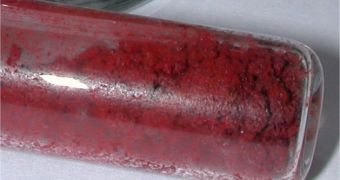A team of British researchers at the University of Leeds announces the discovery of an interesting new compound, called pyrophosphite. The material, a derivate of phosphorus, may have served as a potent source of energy for the earliest lifeforms that developed on our planet.
In other words, the group may have shed more light on one of the most mysterious aspects of early Earth, namely how the first lifeforms appeared, developed, mutated and survived. Thus far, gaining new data about these organisms proved to be extremely difficult.
Understanding abiogenesis is one of the main goals of science, in general. Doing so could enable researchers to create new life out of nothing. The process seeks to explain the emergence of life from inanimate matter, more than 4 billion years ago.
“It's a chicken and egg question. Scientists are in disagreement over what came first – replication, or metabolism. But there is a third part to the equation, and that is energy,” says UL research leader Dr. Terry Kee, quoted by Daily Galaxy.
ATP, or adenosine triphosphate, is the main energy molecule in living things. It is produced by mitochondria, the cellular power plant, and is absolutely necessary for the survival of all organisms.
“Not only is phosphorus the active component of ATP, it also forms the backbone of DNA and is important in the structure of cell walls. But despite its importance to life, it is not fully understood how phosphorus first appeared in our atmosphere,” Kee says.
“One theory is that it was contained within the many meteorites that collided with the Earth billions of years ago,” she goes on to say. About 250 grams of ATP is all it takes to power the human body.
Natural catalysts called enzymes are in charge of underlying respiration, the cellular process through which ATP is constantly regenerated inside cells. “You need enzymes to make ATP and you need ATP to make enzymes,” Dr. Kee says.
“The question is: where did energy come from before either of these two things existed? We think that the answer may lie in simple molecules such as pyrophosphite which is chemically very similar to ATP, but has the potential to transfer energy without enzymes,” she adds.
As such, phosphorus may have been one of the most important chemicals in the history of life here on Earth. Without it, no lifeforms would have developed. If they had, they certainly wouldn't have looked the way they do.

 14 DAY TRIAL //
14 DAY TRIAL //